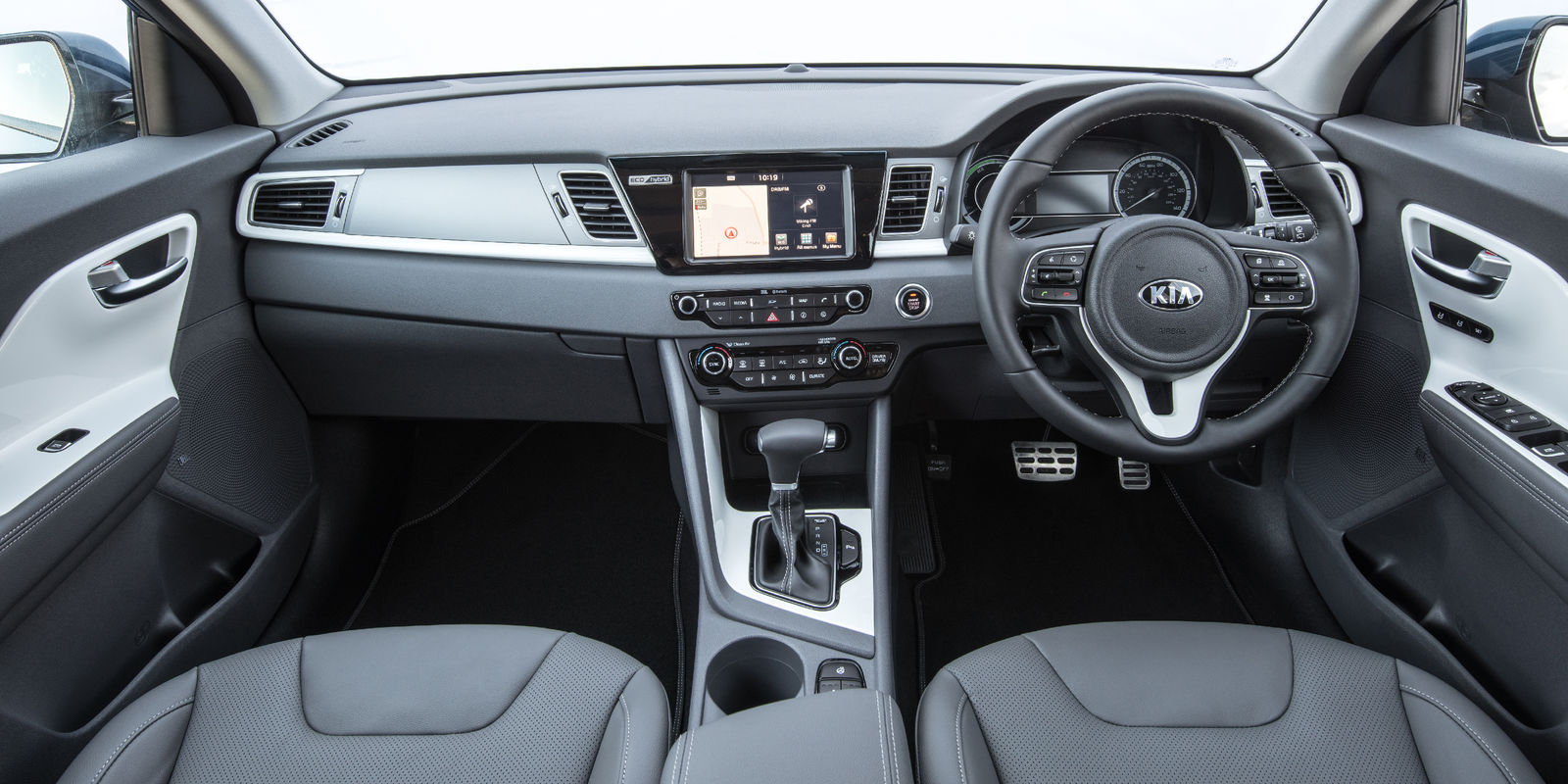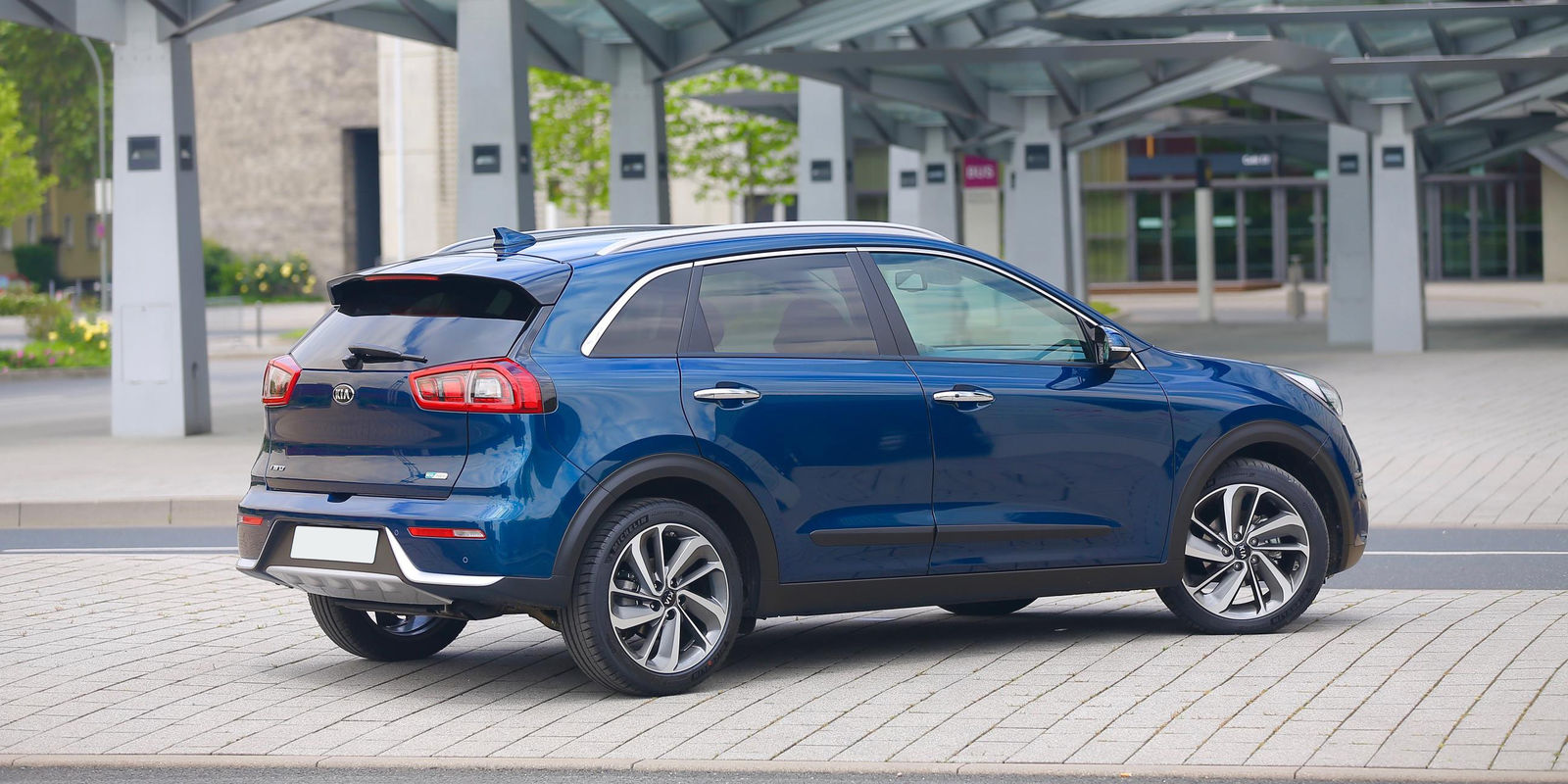Kia Niro Review
by
Unknown
on
03:41
KIA NIRO
Hybrid Crossover Is Spacious And Cheap To Run
REVIEW:
The Kia Niro is a petrol-electric hybrid that rivals the larger Mitsubishi Outlander PHEV, regular hybrids such as the Toyota Prius and Hyundai Ioniq, and conventional crossovers such as the Renault Captur and Peugeot 2008.
With a boxy body, the Kia is one of the roomier hybrids you can get and the interior is one of its strongest selling points – the material quality is good and so is the build, while passenger space is better than in the Prius.
Being easy and relaxing to drive is the Niro’s main focus so don’t expect it to bring a smile to the face of enthusiasts. Apart from the uninspiring handling the rest of the package is very good, with near-silent running and decent ride quality, as long as you don’t go for the larger alloy wheels.
Powering the Niro is a 1.6-litre petrol engine with around 100hp. The engine is helped by an electric motor producing almost 50hp. The power is transferred to the front wheels through a DSG gearbox that, with its quick shifts, is a blessing compared to the droning CVT gearboxes fitted to most hybrids.
Entry-level models are well-equipped coming with air-conditioning, a DAB digital radio with Bluetooth phone connection and voice commands plus alloy wheels.
If you’re not sure whether it’ll be big enough for your every need, read our dedicated Kia Niro size and dimensions guide.
INTERIOR:
The Niro keeps it pretty conventional inside compared to more futuristic rivals such as the Toyota Prius. Places you frequently touch are made from soft-touch plastics, although plastics lower down in the cabin are durable, if a little cheap-feeling. The overall sense you get is that of robustness and that is confirmed by the standard seven-year warranty.
The standard infotainment system is operated via a seven-inch touchscreen and is easy to use because frequently used functions (such as the sat-nav map and connected media) have their own dedicated buttons on the dashboard. A more advanced system, with a larger eight-inch screen, is optional. It comes with similar features – such as live traffic updates – to BMW’s highly rated iDrive system, although in our experience it’s not quite as slick in operation.
Kia Niro passenger space
Unlike its closest rival, the Prius, which is a hatchback, the Niro has a much more usable crossover body shape. This translates into plenty of room inside and makes the Kia one of the most spacious hybrids on sale. Thanks to a long wheelbase (the distance between the front and rear wheels) there is ample legroom for adults in the back and good amounts of headroom too.
Kia Niro boot space
To maximise boot space the Kia’s batteries are positioned under the rear seats. The Niro is a bit smaller than the Prius, but a 421-litre boot with the seats up is good enough for a small family’s luggage for a week. Fold the seats down and with a capacity 1,425 litres there’s plenty of space for the kit you’ll need for a spot of DIY.
DRIVING:
One of the biggest differences between the Kia and most of its hybrid rivals is that the Niro comes with the company’s newly developed six-speed dual-clutch gearbox – providing the family crossover with sharp throttle response and even a sport mode with manual shifting. The shifting speed isn’t as quick as VW’s DSG gearboxes and the Kia does sometimes hold onto a gear, just like a CVT, for longer than you want. Regardless, the Kia’s gearbox is a huge improvement over the CVTs in most other hybrids.
Don’t be fooled by the existence of a sport button – the Niro isn’t designed with engaging handling in mind. Instead, it focuses on providing a hassle-free, relaxing driving experience and it does that job very well. The petrol engine is hushed in its operation and the electric motor emits no more than a muted hum – making the Kia a naturally serene machine.
The ride quality comes in for some criticism, though – it’s firmer than expected, and this sticks out in a car that is otherwise so cosseting. Most complaints are levelled at the top-spec version with 18-inch wheels, so stick with the basic model and its 16-inch versions if you value a comfy ride.
ENGINE:
Thanks to a fairly gutless 1.6-litre engine producing 104hp, combined with a 43hp electric motor, the Niro definitely isn’t fast. The 0-62mph time of 11.5 seconds is almost acceptable, but some testers note that keeping up with motorway traffic is a bit of a struggle.
On the other hand, the electric motor’s extra torque makes the Niro fairly nippy in town and the transition between petrol/electric propulsion is nearly imperceptible. Most of the time you know only by looking at the instrument binnacle and its modern graphics.
Kia claims a combined fuel economy figure of 74.3mpg and around 60mpg should be possible in the real world, which is impressive for something so spacious; given that it’s an almost exact match for the Toyota Prius. Road tax is free thanks to CO2 emissions of 89g/km.
VALUE FOR MONEY:
Unlike posh carmakers such as Audi and BMW that leave thousands worth of essential kit in the options list, the Kia Niro has no options. That isn’t because there’s nothing to equip it with, but rather all the kit is allocated between the four trim levels that, naming-wise, are pretty straightforward.
Kia Niro 1
As entry-level trims go, this one is one of the better equipped. Apart from sat-nav and parking sensors you really get what a basic model should have – alloy wheels, climate control with two temperature zones, digital radio, Bluetooth phone connection and voice commands.
Kia Niro 2
The Niro 2 adds the 7-inch touchscreen sat-nav system along with rear parking sensors and a reversing camera. Visual appeal is boosted by tinted rear windows and chrome roof rails.
Kia Niro 3
From this model upwards things get luxurious if a bit pricey – the 3 gets black leather upholstery, a powerful JBL sound system, heating for the steering wheel and front seats as well as front parking sensors. The 18-inch alloys are the most notable exterior upgrade over the 2 trim.
Kia Niro First Edition
The Kia Niro First Edition is filled to the brim with the most expensive equipment Kia has to offer – things such as the adaptive cruise control and autonomous emergency braking used to be reserved for expensive executive limousines, but now you can have them in the family-orientated Kia hybrid.
CONCLUSION:
Kia says the Niro is a HUV, or Hybrid Utility Vehicle and we’re prepared to agree – the Niro is a hybrid, in terms of utility it is roomier than other hybrid rivals and it’s undoubtedly a vehicle. So if you’re in the market for something that can seat four adults, fit their luggage and whisk them away in near silence, with the benefit of free road tax, the Toyota Prius is no longer the default choice.







